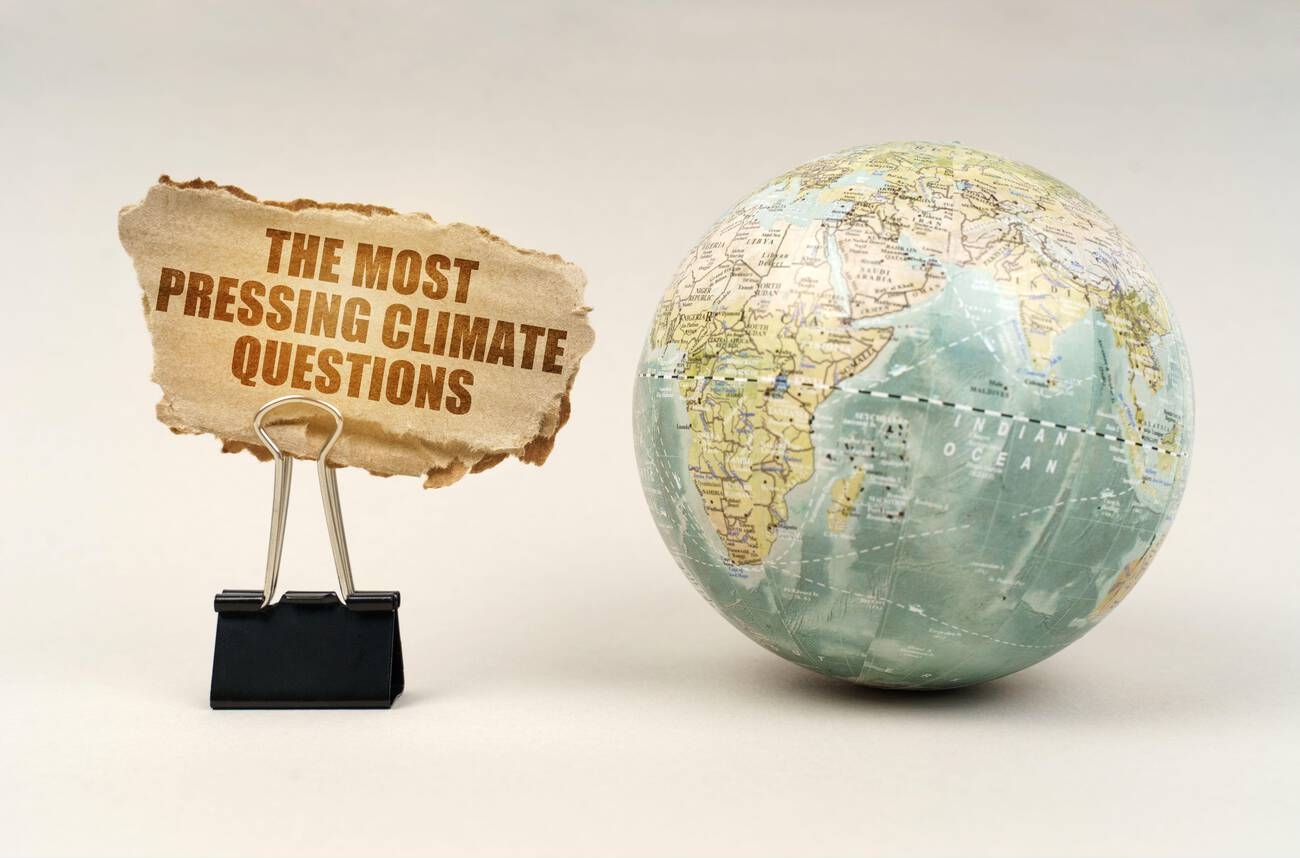Imagine you’re navigating a maze of information, trying to grasp the complex web of climate change. In this article, we’ll guide you through the labyrinth of frequent questions about climate change that demand your attention. From unraveling its causes to understanding its impact on communities worldwide, prepare to delve into the intricacies of this pressing global issue. Let’s embark on this enlightening journey together.
Causes of Climate Change
One major cause of climate change is the burning of fossil fuels. When you use cars, heat your home, or rely on electricity generated from coal and oil, you contribute to carbon emissions that trap heat in the atmosphere. Human activities like industrial processes and deforestation also play a significant role in altering the Earth’s climate. Deforestation impact is crucial as trees absorb carbon dioxide; without them, more greenhouse gases are left unchecked. Natural causes such as volcanic eruptions and variations in solar radiation influence climate patterns too. Additionally, climate feedbacks can amplify the effects of these changes, creating a complex web of interactions that further exacerbate global warming. Understanding these causes is vital in addressing and mitigating climate change effectively.
Effects on Global Temperature
The effects of global temperature can be significant, impacting ecosystems and weather patterns around the world. Here are some key impacts to consider:
- Temperature trends have been on the rise globally, leading to shifts in climate patterns.
- Heat waves are becoming more frequent and intense, posing risks to human health and agriculture.
- The impact on ecosystems is profound, with species facing challenges adapting to rapid changes.
- Melting glaciers are contributing to rising sea levels, threatening coastal communities.
- As a result of melting ice caps and thermal expansion, rising sea levels are affecting low-lying areas worldwide.
Impact on Polar Ice Caps
Impacts on polar ice caps are evident in the rapid rate of melting and shrinking observed in recent years. The Arctic melting is causing sea levels to rise, putting coastal areas at risk of flooding and creating climate refugees. Antarctic glaciers are also retreating, contributing to the increase in sea levels that threaten low-lying regions globally. As the ice diminishes, polar bear habitats are dwindling, forcing these majestic creatures to travel greater distances in search of food. The changes occurring in these icy regions have far-reaching consequences for our planet’s ecosystems and weather patterns. It is crucial to address these issues collectively to mitigate further damage and preserve the delicate balance of our environment.
Role of Greenhouse Gases
Excessive emissions of greenhouse gases are trapping heat in the Earth’s atmosphere, leading to a rise in global temperatures and driving changes in climate patterns. As you delve into the role of these gases, consider the following:
- Greenhouse gas emissions contribute significantly to atmospheric warming.
- Rising carbon dioxide levels are a major concern due to their impact on climate change.
- Understanding various methane sources is crucial for managing heat trapping gases.
- The intricate balance of heat trapping gases affects our planet’s overall climate system.
- Mitigating the effects of these gases requires collective action and sustainable practices.
Connection to Extreme Weather Events
When it comes to connecting greenhouse gases to extreme weather events, consider the intensified hurricanes and heatwaves that have been linked to these emissions. Climate change is altering weather patterns, leading to more frequent and severe extreme weather events. As these disasters become more common, disaster response and preparedness are crucial for communities to build resilience against the impacts of these extreme events. Mitigation strategies are essential in combating the effects of climate change on extreme weather, focusing on reducing greenhouse gas emissions to lessen the intensity of future disasters. Understanding the connection between greenhouse gases and extreme weather can help individuals and governments alike take proactive measures in addressing climate change and its influence on extreme events.
Ocean Acidification
Ocean acidification’s impact on marine life can be severe, affecting the ability of organisms like corals and shellfish to build their protective structures. This phenomenon alters the pH levels of seawater due to increased carbon dioxide absorption from the atmosphere. The consequences are far-reaching, with coral reef bleaching becoming more prevalent and threatening the biodiversity these ecosystems support. The vulnerability of marine ecosystems is heightened as key species struggle to adapt to changing conditions, impacting entire food webs. In particular, the shellfish industry faces significant concerns as acidification hinders shell formation and growth in mollusks like oysters and mussels, jeopardizing both commercial harvests and coastal economies.
- Decreased coral resilience
- Shifts in marine biodiversity
- Challenges for calcifying organisms
- Impaired larval development
- Economic repercussions for coastal communities
Deforestation and Climate Change
Forests play a crucial role in regulating the Earth’s climate by absorbing carbon dioxide emissions and releasing oxygen into the atmosphere. Forest preservation is essential for maintaining this delicate balance, ensuring that carbon sequestration continues to offset greenhouse gas effects. Biodiversity conservation within forests supports ecosystems that are resilient to climate change impacts, fostering a healthy environment for all species. Sustainable logging practices help mitigate deforestation’s adverse effects, promoting responsible resource management. Agroforestry practices offer innovative solutions by integrating trees into agricultural systems, enhancing sustainability and productivity.
| Importance | Examples |
|---|---|
| Carbon Sequestration | Offset emissions |
| Biodiversity Conservation | Protect endangered species |
| Sustainable Logging | Selective tree cutting |
Solutions for Mitigation
To address deforestation issues, it’s crucial to implement sustainable practices like agroforestry to promote biodiversity and enhance ecosystem resilience. When considering solutions for mitigation, you can take proactive steps towards a more sustainable future. Here are some key actions you can incorporate:
- Carbon pricing helps internalize the environmental cost of carbon emissions.
- Engage in reforestation efforts to restore lost forests and offset carbon emissions.
- Improve energy efficiency in your daily activities to reduce overall energy consumption.
- Opt for sustainable transportation options such as biking or public transit to lower greenhouse gas emissions.
- Invest in green infrastructure like green roofs or permeable pavements to mitigate climate change impacts effectively.
Renewable Energy Options
Implementing renewable energy sources is essential for reducing carbon emissions and transitioning to a more sustainable energy future. By harnessing solar power, wind energy, biofuel options, hydroelectric dams, and geothermal energy, we can significantly decrease our reliance on fossil fuels.
| Renewable Energy Sources | Advantages | Challenges |
|---|---|---|
| Solar Power | Clean energy source | Initial setup costs |
| Wind Energy | Abundant resource | Intermittency issues |
| Biofuel Options | Renewable fuel source | Land use concerns |
Each of these renewable options plays a vital role in combating climate change. Solar power and wind energy are abundant resources that offer clean electricity. Biofuels provide an alternative to traditional fossil fuels but raise land use questions. Embracing these technologies is crucial for a sustainable future.
Role of Carbon Footprint
After exploring renewable energy sources, understanding the role of your carbon footprint is crucial in combating climate change. By implementing carbon offsetting strategies, sustainable transportation options, and energy-efficient practices, you can significantly reduce your environmental impact. Additionally, learning about carbon sequestration methods can help you contribute to removing carbon dioxide from the atmosphere. Companies also play a vital role in reducing corporate carbon emissions through sustainable practices and investments in eco-friendly technologies.
Key Strategies for Lowering Your Carbon Footprint:
- Adopting public transportation or biking
- Investing in energy-efficient appliances
- Supporting reforestation projects for carbon sequestration
- Utilizing virtual meetings to reduce travel emissions
- Implementing recycling programs at home and work
Paris Agreement and Climate Goals
Understanding the Paris Agreement and its impact on global climate goals is essential for addressing environmental challenges. The Agreement aims to limit global warming to well below 2 degrees Celsius above pre-industrial levels, with efforts to keep it under 1.5 degrees Celsius. Achieving these temperature targets requires significant emission reduction and enhanced climate action worldwide. Global cooperation plays a vital role in meeting these ambitious goals by facilitating the exchange of knowledge, technology, and resources. Embracing renewable energy sources is crucial for transitioning towards low-carbon economies and reducing greenhouse gas emissions effectively.
| Climate Action | Emission Reduction | Renewable Energy |
|---|---|---|
| Mitigating carbon footprint through policy changes | Implementing cleaner technologies | Transitioning to solar and wind power |
Climate Change and Biodiversity
Concerns about the impact of climate change on biodiversity are growing as habitats are increasingly threatened by rising temperatures and extreme weather events. It’s crucial to understand the implications this has on our planet. Here are some key points to consider:
- Biodiversity conservation plays a vital role in maintaining healthy ecosystems.
- Ecosystem resilience is essential for withstanding environmental changes.
- Species extinction is a direct consequence of habitat loss and climate disruption.
- Habitat destruction poses a significant threat to numerous plant and animal species.
- Implementing effective conservation strategies is crucial for preserving biodiversity in the face of climate change.
Urban Heat Island Effect
Explore how cities are impacted by the Urban Heat Island Effect, and consider ways to mitigate its effects on urban environments. Urban planning plays a crucial role in combating heat islands. Integrating green spaces into city design helps reduce temperatures by providing shade and promoting evapotranspiration. Building design also contributes to heat mitigation; materials like cool roofs and reflective pavements can lower surface temperatures. Urban forestry is another effective strategy due to trees’ cooling effect through shade and transpiration. Asphalt heat retention exacerbates the island effect, emphasizing the need for cooler alternatives in urban development projects. By incorporating these strategies, cities can combat rising temperatures and create more sustainable and livable urban environments.
Climate Change and Health Impacts
Leaving the Urban Heat Island Effect behind, let’s delve into how climate change affects your health. It’s not just about rising temperatures; it’s about the bigger picture impacting you and your community.
Here are some key points to consider:
- Public Health: Understand how climate change can directly affect the well-being of populations.
- Environmental Impact: Explore the consequences of a changing climate on ecosystems and natural resources.
- Community Resilience: Discover ways communities can adapt and respond to health challenges posed by climate change.
- Health Disparities: Recognize how certain groups may be disproportionately affected by these environmental shifts.
- Adaptation Strategies: Learn about strategies to mitigate and adapt to the health impacts of a changing climate.
Economic Costs of Climate Change
When considering the economic costs of climate change, it’s crucial to understand how various industries and sectors are impacted by shifting environmental conditions. Environmental regulations play a vital role in shaping how businesses operate to reduce their carbon footprint and adapt to new standards. Carbon pricing mechanisms aim to internalize the cost of greenhouse gas emissions, encouraging companies to invest in cleaner technologies. Climate finance provides funding for projects that mitigate or adapt to climate change impacts, fostering sustainable development practices. Green technologies offer innovative solutions for reducing emissions and increasing energy efficiency. Embracing sustainable development principles not only helps combat climate change but also creates opportunities for economic growth in environmentally conscious sectors.
Climate Change and Food Security
To ensure food security in the face of climate challenges, consider diversifying your agricultural practices and investing in resilient crop varieties that can withstand changing weather patterns. By embracing agricultural adaptation strategies and implementing climate smart farming techniques, you can mitigate the risks of food insecurity caused by fluctuating environmental conditions. Here are some key actions to enhance crop resilience and reduce hunger risks:
- Implement sustainable farming practices such as crop rotation and intercropping.
- Utilize drought-resistant seeds and breeds to combat water scarcity issues.
- Adopt precision agriculture technologies to optimize resource usage.
- Promote soil conservation methods like cover cropping and no-till farming.
- Enhance biodiversity on your farm to create a more resilient ecosystem.
Climate Change Denial
Denying the impact of climate change can hinder efforts to address environmental challenges effectively. Public perception plays a crucial role in shaping attitudes towards climate change. Despite overwhelming scientific consensus, media influence and political implications often contribute to skepticism or denial. Psychological barriers, such as fear or cognitive dissonance, can further fuel climate change denial. It is essential to understand that acknowledging the reality of climate change is the first step towards meaningful action. By addressing misinformation spread through various channels and promoting awareness of the urgency for mitigation and adaptation measures, we can work together to combat climate change effectively. Embracing a collective responsibility towards our planet’s future is key in overcoming obstacles posed by denial and fostering sustainable solutions.
Role of International Cooperation
Understanding the importance of collaboration among nations in addressing environmental challenges is crucial for achieving impactful solutions. When it comes to global collaboration, policy implications play a significant role in shaping effective measures. Diplomatic negotiations are key in ensuring that impactful measures are agreed upon and implemented successfully. Cross-border initiatives and environmental agreements help in fostering cooperation between countries for the greater good of the planet. International partnerships are essential for developing comprehensive climate action plans that can make a real difference on a global scale. Lastly, worldwide efforts towards sustainable development require collective action and commitment from all nations to combat climate change effectively.
Climate Change and Indigenous Communities
Collaborating with indigenous communities is essential for creating sustainable solutions to environmental challenges. By engaging with Indigenous perspectives, tapping into cultural resilience, and valuing traditional knowledge, we can foster environmental justice and promote community engagement. Indigenous communities possess a deep understanding of the land, often passed down through generations. This knowledge is invaluable in addressing climate change and its impacts on ecosystems. Moreover, by including Indigenous voices in decision-making processes, we ensure that policies are more inclusive and effective. Recognizing the importance of cultural heritage and honoring indigenous wisdom not only benefits the environment but also strengthens our collective ability to tackle climate change in a holistic and equitable manner.
Climate Change Adaptation Strategies
When adapting to climate change, it’s crucial to explore innovative solutions and implement resilient practices that can help communities thrive in the face of environmental challenges. Here are some key strategies for climate change adaptation:
- Community resilience: Building strong community networks and support systems.
- Sustainable agriculture: Implementing regenerative farming practices and promoting local food production.
- Coastal protection: Developing mangrove restoration projects and implementing sustainable coastal defense mechanisms.
- Water management: Investing in water conservation techniques and improving stormwater drainage systems.
- Infrastructure development: Constructing climate-resilient buildings and upgrading urban infrastructure to withstand extreme weather events.


